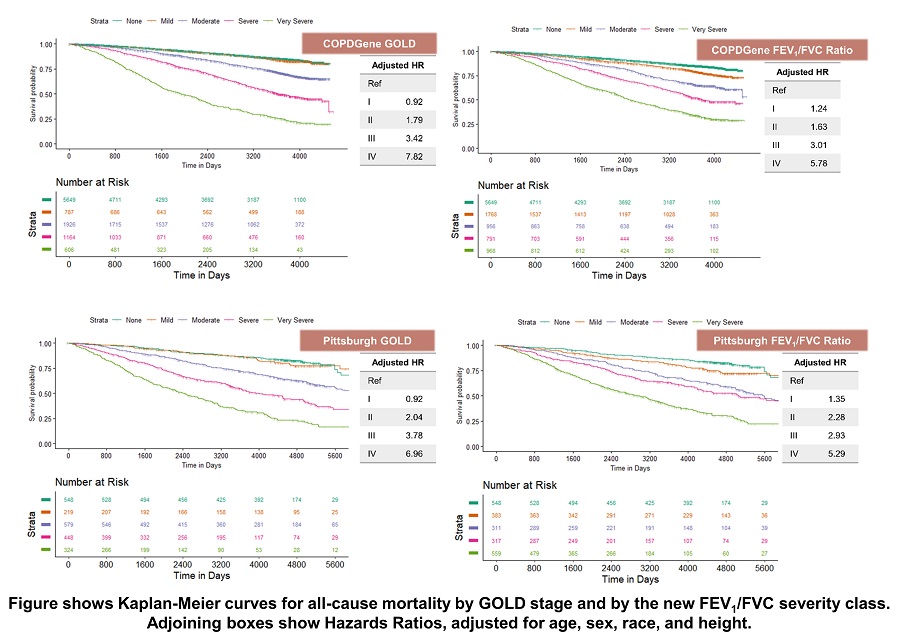Abstract
Background
The diagnosis of COPD is based on low FEV1/FVC but its severity is classified using ppFEV1.
Aim
To test a new severity classification scheme for COPD using FEV1/FVC, a more robust measure of airflow obstruction than ppFEV1
Methods
In COPDGene (n=10198), severity of airflow obstruction was categorized by GOLD Stages 1-4 (ppFEV1 of ?80, ?50-80, ?30-50, and <30). A new severity classification (STaging of Airflow obstruction by Ratio, STAR) was tested in COPDGene: FEV1/FVC ?0.60-0.70, ?0.50-0.60, ?0.40-0.50, and <0.40, respectively for stages 1-4, and applied to the combined Pittsburgh SCCOR and Pittsburgh Emphysema registry cohorts for replication (n=2120).
Results
Agreement (weighted Bangdiwala B) between GOLD and new FEV1/FVC severity stages was 0.89 in COPDGene and 0.88 in the Pittsburgh cohort. In both COPDGene and the Pittsburgh cohort, in contrast to GOLD staging, STAR provided significant discrimination between the absence of airflow obstruction (Normal) and Stage I for all-cause mortality (Figure), quality of life, dyspnea, and 6-minute walk distance. Similarly, in COPDGene, STAR but not GOLD stages showed differences between Normal and Stage 1 for emphysema on CT, exacerbations, and lung function decline.
Conclusion
The new classification scheme STAR differentiates patients? symptoms, disease burden, and prognosis better than the existing scheme based on ppFEV1, and without reliance on race/ethnicity and other demographics.
